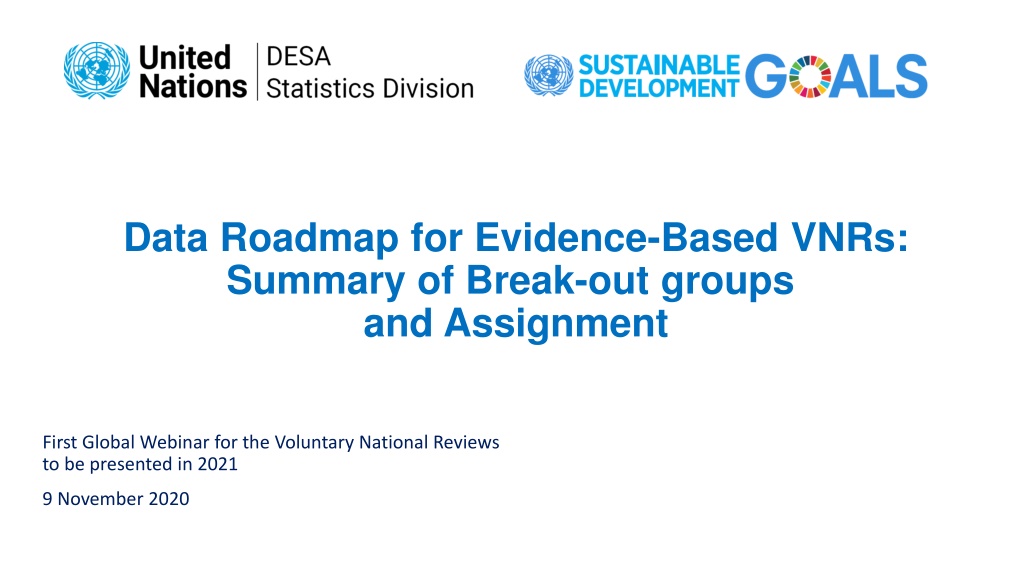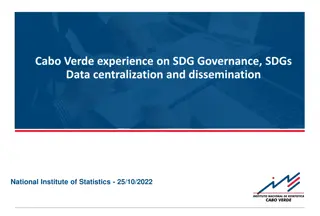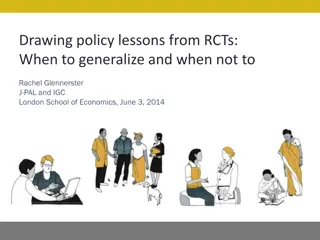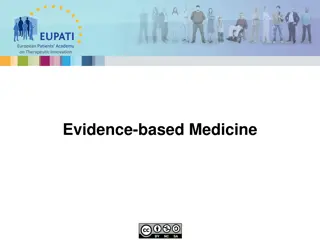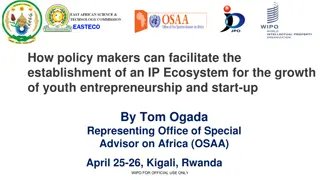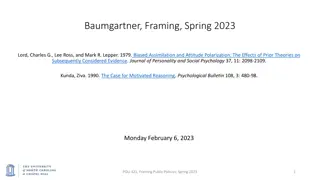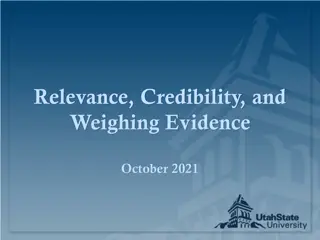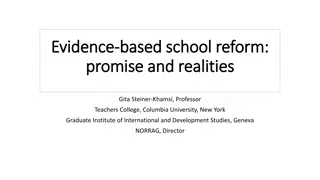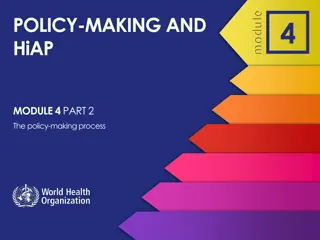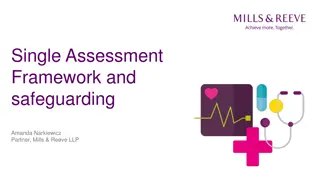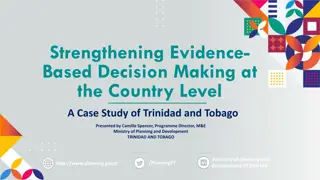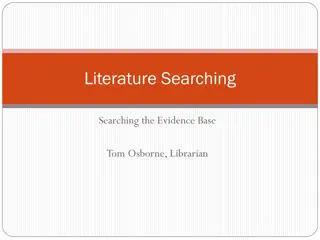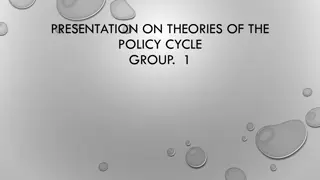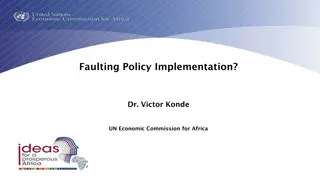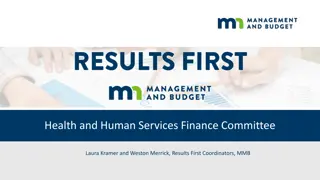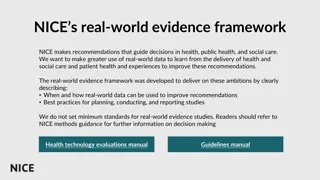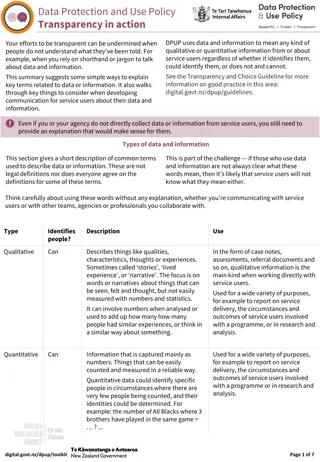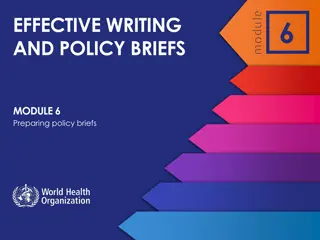Utilizing Data for Evidence-Based VNRs: Enhancing Policy Making
Data plays a crucial role in preparing evidence-based Voluntary National Reviews (VNRs) by informing policy design, monitoring progress towards the SDGs, and identifying challenges in leaving no one behind. This article highlights how data and statistics can be used effectively, the importance of coordination for data collection, and the significance of disaggregated data in understanding vulnerable groups and designing targeted policies.
Download Presentation

Please find below an Image/Link to download the presentation.
The content on the website is provided AS IS for your information and personal use only. It may not be sold, licensed, or shared on other websites without obtaining consent from the author. Download presentation by click this link. If you encounter any issues during the download, it is possible that the publisher has removed the file from their server.
E N D
Presentation Transcript
Data Roadmap for Evidence-Based VNRs: Summary of Break-out groups and Assignment First Global Webinar for the Voluntary National Reviews to be presented in 2021 9 November 2020
Discussion Questions Better use of data for policy making 1. How can data and statistics be used to prepare an evidence-based VNR? What are examples of how to use data to inform and design policies? How can data help address the leaving no one behind principle of the 2030 Agenda? Data are critical for designing evidence-driven policies, programmes, and projects. They can tell how a country fares in achieving the SDGs, what progress has been made, and what challenges a country is facing; Data and statistics are essential for monitoring and ensuring targets can be reached leaving no one behind. SDG indicators are the key performance indicators to measure the progress in specific issues. National and local government should raise the awareness of how data can be used: data helps identify the opportunity in the most vulnerable groups and different geographical settings where SDGs lag. Coordination and stakeholder engagement are essential for data collection. An online platform is needed and important to see the evolution of the data collection and reporting. VNR should make people more aware of the challenges by engaging them in the discussion and alerting the data as the validity of the discussion. Statistics Division
Discussion Questions Better use of data for policy making (Continued) 1. How can data and statistics be used to prepare an evidence-based VNR? What are examples of how to use data to inform and design policies? How can data help address the leaving no one behind principle of the 2030 Agenda? It is crucial that data is pushed as a quality assurance in the VNRs. In VNR, CSO from countries should use collected SDGs related data from various sources: statistical surveys, formal administrative records, and from different sectors and ministries to share the best practices on implementing the 2030 agenda. The disaggregated data with good quality can help understand vulnerable groups' challenges, how current policies affect them, and design targeted policies. Some good practices on using disaggregated data include vulnerable group index development, roadmap for reducing stunting, and understanding the differences between rural and urban. The importance of disaggregated data is emphasized while harmonizing the data from different data sources remains challenges. Statistics Division
Discussion Questions - Coordination 2. What efforts are being made to set up a national monitoring coordination mechanism to support the collection of data for evidence-based VNRs? What challenges are being faced with data collection and management? Effort: Many participants emphasize decentralization, and coordination is vital; NSO should have the government mandate to coordinate. There is a coordinating committee, but there is still a need to contact ministries to analyze the metadata. Consistency is important in evidence-based VNRs in terms of data collection and communication. Data collection at the local/provincial level that feeds to the national level helps to leave no one behind. To solve the data gap caused by COVID-19, government needs to adopt new technology and methodology. An Inter-Ministerial Committee was formed by a decree from the prime minister to follow up on the SDGs' implementation, including the national statistical office as the primary source and coordinator of data required for the SDGs. An electronic data platform was developed to collect data and provide updates on SDGs in a simple way for many users. The timely data is important as the time lag in data impede policymaking. There is a need to use both traditional and non-traditional data sources. For NSO, to collect more official data, monitoring and evaluation processes are needed at both local and national/ministry levels. Statistics Division
Discussion Questions Coordination (continued) 2. What efforts are being made to set up a national monitoring coordination mechanism to support the collection of data for evidence-based VNRs? What challenges are being faced with data collection and management? Challenge: Challenge is to determine whether an indicator is internationally comparable and whether to release the indicator as a proxy or not release and redo to comply with international metadata. Another challenge is that the reference period sometimes doesn t match, and nowcasting time-series data can work around this challenge. The challenge is the harmonization of the data from different sources. The data gaps and inconsistencies are usually the challenges caused by the noncooperation between ministries and NSO and the inconsistent data collection frequency. The biggest challenge of data collection is the closure of institutions in the private and public sectors due to the COVID-19. Sustainability of working groups is the main challenge; countries need to keep the working groups with sustainable growth. Coordination issues with other agencies remain a challenge. The small island states face data issues: not all SDG targets are relevant to SIDS countries and normally have small national statistical offices with limited capacities. Localization of the statistical data is the main challenge, especially at the municipal level; the data collection is difficult. Statistics Division
Discussion Questions COVID Impact 3. How do you see the impact of COVID-19 in monitoring and reaching SDG targets? How can the impacts of COVID-19 on progress towards the SDGs be reflected in the 2021 VNR when the production of socioeconomic data itself will be delayed due to the pandemic? Countries have been using existing mechanisms, such as focal points in the Statistics Bureau and line ministries, to help coordinate. There are challenges due to limited capacity. The 2020 round of census has been affected by the pandemic. The national statistics agency uses new methods to collect the data for planning its pandemic response and national policies. While the country is graduating from LDC, the Covid-19 pandemic impacts its economic growth, such as the tourism sector and other allied sectors. Countries can only use various sources to supplement the current data without exclusively relying on official data sources since a lot of data has not been produced officially caused by the pandemic. Pandemic has affected the achievement of evaluation and monitoring of SDGs, especially those related to economic, health, and social areas. Many indicators could be monitored in 2021 VNR through the report preparation at the local level, focusing on the most affected sectors and preparing a recovery plan. The impact of the COVID-19 should be most considerable on the social side such as SDG 1(Poverty), 2 (hunger), 4 (Education), 5 (Gender equality), 16 (Peace) Statistics Division
Discussion Questions new data sources and partnership 4. What efforts are being made to follow up on and review implementation of the 2030 Agenda, including multi-stakeholder participation and mobilizing support through partnerships? Are there any new data sources used for SDG monitoring in light of the COVID-19 situation? Web-based systems for sectors to have updated information related to COVID-19; to update the data daily, the government has carried out surveys for different provinces with high frequency. Even civil society has surveys to evaluate social and economic impact; various stakeholders find new ways to continue their work- more qualitative surveys that complement government data. Statistics Division
Develop a Data Roadmap for 2021 VNR Prepare 2021 VNR Collect and analyze Data Present SDG progress and challenges in achieving the SDGs using data in the VNR Collect data from the NSS and assess data availability and gaps 2020.11 2021.01 2021.03 2021.05 2021.07 Address data Gaps Establish SDG monitoring coordination body Coordinated by NSO, work with entire national statistical system to map SDG indicators availability Present your VNR Explore other data sources to fill in data gaps Tell your data stories in VNR presentation (infographics, visualizations, maps, etc.) www.free-powerpoint-templates-design.com
Homework: Develop a Data Roadmap for 2021 VNR Your Text Here Your Text Here You can simply impress your audience and add a unique zing You can simply impress your audience and add a unique zing 2020.11 2021.01 2021.03 2021.05 2021.07 Your Text Here Your Text Here Your Text Here You can simply impress your audience and add a unique zing You can simply impress your audience and add a unique zing You can simply impress your audience and add a unique zing www.free-powerpoint-templates-design.com
